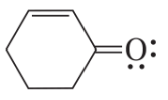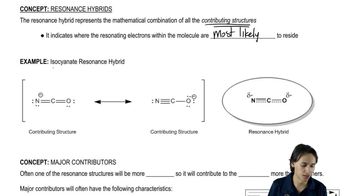a. Predict the relative bond lengths of the three carbon–oxygen bonds in the carbonate ion.
b. What is the charge on each oxygen?

 Verified step by step guidance
Verified step by step guidance Verified video answer for a similar problem:
Verified video answer for a similar problem:



 3:34m
3:34mMaster The rules you need for resonance: with a bite sized video explanation from Johnny
Start learning